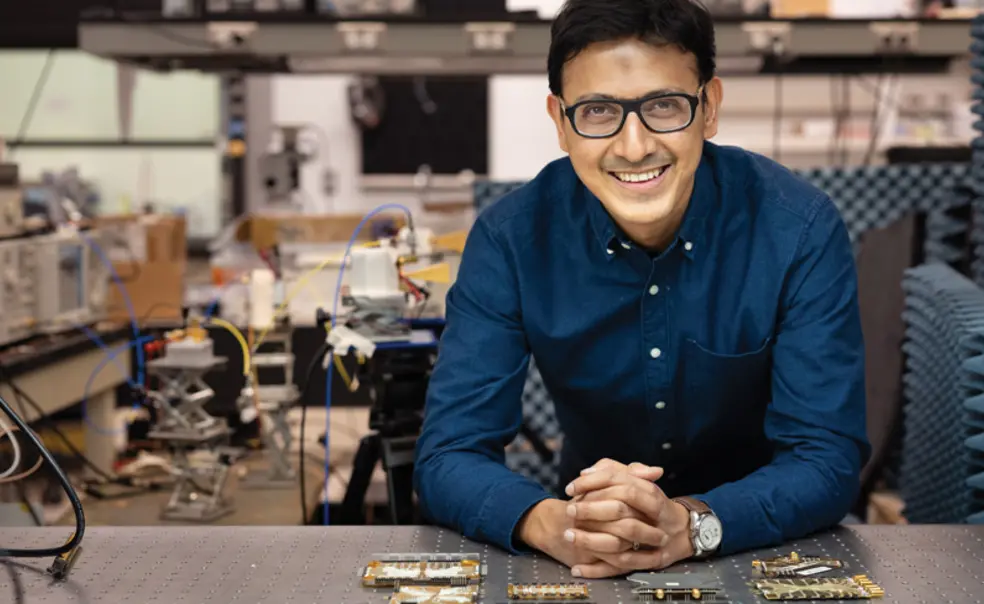Grant Uncertainty Continues to Impact Research at Princeton
Three weeks after his $10 million microchip project was announced, principal investigator Kaushik Sengupta received a stop-work order
Three weeks after Princeton announced it was leading a nearly $10 million, two-and-a-half-year collaborative effort to produce better microchips for radio-frequency communication, like those used by cellphones and autonomous vehicles, Kaushik Sengupta, the principal investigator and a professor of electrical and computer engineering (ECE), received a stop-work order. The U.S. Department of Commerce had declared, in late August, that President Joe Biden’s administration illegally created Natcast, the National Center for the Advancement of Semiconductor Technology, a public-private nonprofit consortium that was overseeing the project.
Two weeks later, in mid-September, Sengupta said the project’s future was uncertain, and a Natcast symposium scheduled for September in Texas had been canceled.
The order said “You have to stop work” on the project, which started in June and required specific outputs, Sengupta said, “and of course, it creates a disturbance, and we have to navigate that.” Regardless, work on general principles of the research continues to progress, building upon what the lab has been doing for years.
Sengupta and University administrators — whom he called “very, very helpful” with the situation — are looking for alternative funding for the semiconductor research, in which Princeton uses AI to design radio-frequency chips that convert data from the physical world into information computers can process.
“These chips are super complex to make,” Sengupta said, because it often takes large design teams who are very experienced to navigate the physical and virtual models. “The idea in our community was that this is so complex that [the] algorithm can never be solvable,” he added.
That changed in 2022, when students in Sengupta’s lab pioneered the use of AI in chip design, leading to unique outputs. Sengupta compared the structures of human- versus AI-designed chips as similar to a typical, rectangular residential home versus one that is jagged and pixelated.
Since then, they’ve refined and expanded their methods.
Jonathan Zhou, a fourth-year ECE Ph.D. student in Sengupta’s lab, said he hoped the CHIPS Act — which was passed by Biden in 2022 and led to the creation of Natcast — would give a big boost to the domestic semiconductor industry, which has been “pretty weak” over the last decade. “Chips are a big part of what makes America a leader on the global stage,” he said.
Sengupta said semiconductors are “a matter of national security” because the chips are “so embedded in your life.”
The government-funded project, for which Princeton was collaborating with other universities and industry partners, was designed to increase semiconductor production as well as “discover new architectures, functionalities, capabilities that didn’t exist before,” according to Sengupta.
The grant was also supposed to support professional development, so more students learn the multidisciplinary “bells and whistles” of this complex technology, Sengupta said.
Princeton has already received some of the grant, but if the government demands it be returned, Sengupta said he believes the University will reimburse the program. However, it’s not clear if “we [can] extend this further and … keep on students working on other interesting things.”
For now, Natcast projects, and the billions of dollars allotted to fund them, remain up in the air, though Sengupta said he’s “confident that whether through Natcast or some other means of funding, we will be able to continue.”












No responses yet